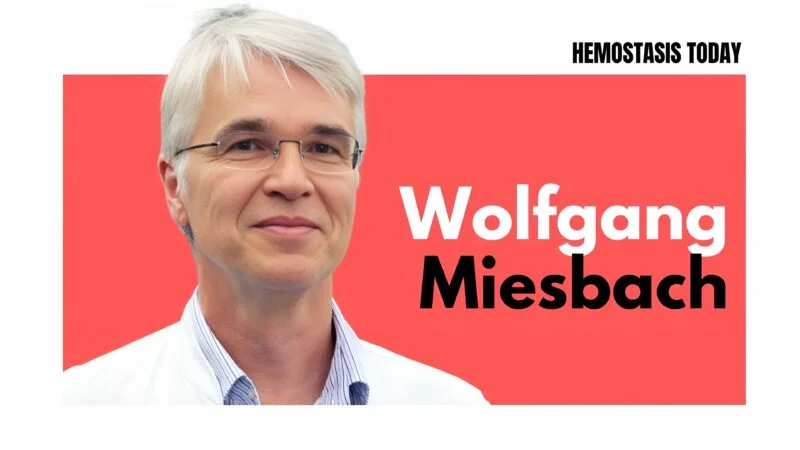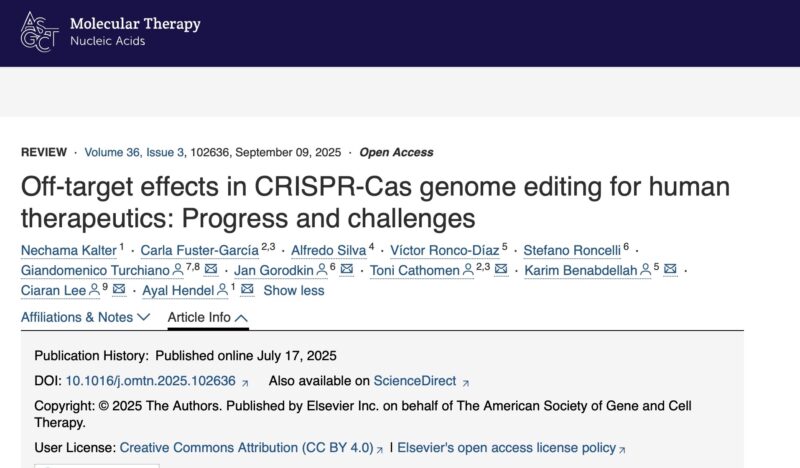
Wolfgang Miesbach Highlights CRISPR-Cas9 Off-Target Safety in Human Genome Editing
Wolfgang Miesbach, Professor of Medicine at Frankfurt University Hospital, shared a post on X:
“՛CRISPR-Cas9 Clinical Safety: Off-Target Assessment Framework — A recently published review highlights the need for advanced strategies to address off-target effects, the most significant challenge in therapeutic genome editing.
CRISPR-Cas9 Overview
CRISPR-Cas9 uses programmable nucleases comprising Cas9 endonuclease and guide RNA (gRNA) to create targeted double-strand breaks with base-pair precision. Current therapeutic applications include treating β-hemoglobinopathies via BCL11A enhancer targeting, demonstrated by Casgevy—the first FDA-approved CRISPR therapy.
Off-Target Effects -Critical Safety Challenge
Off-target activity occurs when CRISPR-Cas9 cleaves unintended genomic loci, potentially:
- Disrupting tumor suppressor genes or proto-oncogenes
- Generating large structural variants (deletions, inversions, translocations)
- Causing chromosomal instability and potential malignant transformation
Clinical reality: Over 100 active CRISPR clinical trials are underway, yet safety assessment protocols remain inconsistent.
Five-Tier Safety Assessment Framework
The authors propose a clear five-step safety evaluation:
1. Computational gRNA Design
In silico prediction tools identify potential off-target sites
High-fidelity Cas variants reduce off-target binding
2. Experimental Off-Target Nomination
Cell-free and cell-based assays provide genome-wide detection
Orthogonal validation using multiple methodologies
3. Structural Variant Detection
Long-read sequencing identifies large deletions and rearrangements
Digital PCR quantifies specific variants with high sensitivity
4. Functional Safety Assessment
In vitro transformation assays evaluate oncogenic potential
Single-cell sequencing links genotype to phenotype
5. Regulatory Compliance
GMP-grade manufacturing ensures consistent quality
FDA/EMA guidelines mandate comprehensive characterization
Personalized Safety Considerations
Population-specific variants can create or eliminate off-target sites. Solution: Variant-aware prediction tools incorporate individual genetic profiles to identify population-specific or patient-specific risks.
The Path Forward
Standardizing rigorous safety frameworks while maintaining innovation pace remains the key challenge. As CRISPR transitions from experimental tool to clinical standard, comprehensive off-target assessment becomes scientifically essential and ethically imperative for patient safety.
Congratulations to Nechama Kalter and co-authors.”
Read the full article here.
Title: Off-target effects in CRISPR-Cas genome editing for human therapeutics: Progress and challenges
Authors: Nechama Kalter, Carla Fuster-García, Alfredo Silva, Víctor Ronco-Díaz, Stefano Roncelli, Giandomenico Turchiano, Jan Gorodkin, Toni Cathomen, Karim Benabdellah, Ciaran Lee, Ayal Hendel

Stay updated on the latest scientific advances with Hemostasis Today.
-
Nov 27, 2025, 16:00Nathan Connell on WFH AI Summaries from the Global Forum
-
Nov 27, 2025, 15:49Piotr Czempik: Rethinking Coagulation in Acute Liver Dysfunction
-
Nov 27, 2025, 15:35Overwhelmed? A Leader’s Guide from Mark Crowther to Getting Back on Track
-
Nov 27, 2025, 15:10Wolfgang Miesbach’s Top 10 Picks for TTP and Thrombosis from ASH 2025
-
Nov 27, 2025, 14:24ICCBBA’s Executive Director Eoin McGrath Chairs a Dynamic Session on AI, Innovation and Informatics in Transfusion Medicine
-
Nov 27, 2025, 13:26Wolfgang Miesbach’s Top 10 Picks for Bleeding Disorders from ASH 2025
-
Nov 27, 2025, 11:19Priya Prasad Presents a Case of Severe Hypotensive Transfusion Reaction
-
Nov 27, 2025, 04:07Eugene Tang Presents Highlights from UK Stroke Forum 2025
-
Nov 27, 2025, 03:47Michael Makris: I Believe the Time Has Come to Consider Emicizumab Up Front in Persons with Acquired Hemophilia
